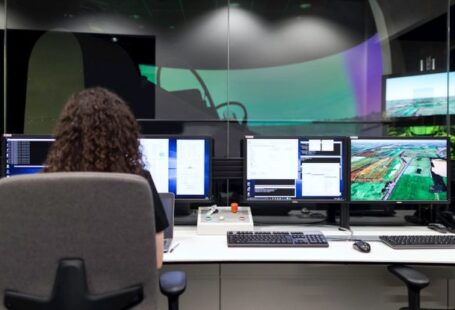In the fast-paced world of design, time is of the essence. The ability to quickly move from concept to prototype can make all the difference in a project’s success. As technology continues to advance, automation in design software has emerged as a game-changer, promising to accelerate the prototype phase and streamline the design process. But can automation truly deliver on this promise?
Enhancing Efficiency Through Automated Tools
One of the key ways automation in design software can accelerate the prototype phase is by enhancing efficiency. By automating repetitive tasks such as creating wireframes, generating design variations, or resizing elements, designers can free up valuable time to focus on more creative and strategic aspects of the design process. This not only speeds up the prototype phase but also results in a more polished final product.
Automated tools can also help designers quickly iterate on their designs. With features like version control, automated backups, and instant previews, designers can experiment with different ideas and make real-time adjustments without the fear of losing their work. This iterative approach not only accelerates the prototype phase but also leads to more refined and innovative designs.
Improving Accuracy and Consistency
Another significant benefit of automation in design software is its ability to improve accuracy and consistency in the prototype phase. By automating tasks that are prone to human error, such as aligning elements, spacing objects, or applying styles consistently across a design, designers can ensure that their prototypes are error-free and visually coherent.
Automation can also help maintain design consistency across different screens and devices. With responsive design becoming increasingly important, automated tools that allow designers to preview their prototypes on various screen sizes and resolutions can save valuable time and effort in the design process. This ensures that the final product looks and functions as intended across different platforms.
Streamlining Collaboration and Feedback
In today’s collaborative design environment, effective communication and feedback are essential for a successful project. Automation in design software can streamline collaboration by providing features that allow designers to easily share their prototypes with team members, stakeholders, or clients. Features like real-time commenting, annotation tools, and version history tracking can facilitate seamless communication and feedback loops, leading to faster decision-making and consensus building.
Automated tools can also help designers gather valuable insights from user testing and feedback. By integrating analytics tools, heatmaps, or A/B testing capabilities directly into the design software, designers can quickly identify pain points, usability issues, or opportunities for improvement in their prototypes. This data-driven approach not only accelerates the prototype phase but also leads to more user-centric and effective designs.
Embracing Automation for Future Design Success
As automation in design software continues to evolve and improve, its potential to accelerate the prototype phase and enhance the overall design process is undeniable. By leveraging automated tools to enhance efficiency, improve accuracy and consistency, and streamline collaboration and feedback, designers can stay ahead of the curve and deliver high-quality prototypes in less time.
To fully harness the power of automation in design software, designers must embrace a mindset of continuous learning and adaptation. By staying informed about the latest trends and technologies in the field, experimenting with new tools and techniques, and seeking feedback from peers and users, designers can unlock the full potential of automation and drive innovation in their design practice.
In conclusion, automation in design software has the potential to revolutionize the way designers approach the prototype phase. By embracing automated tools that enhance efficiency, improve accuracy and consistency, and streamline collaboration and feedback, designers can accelerate their design process and deliver exceptional prototypes that meet the needs of today’s fast-paced design industry.





